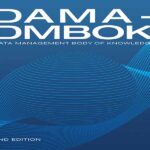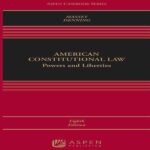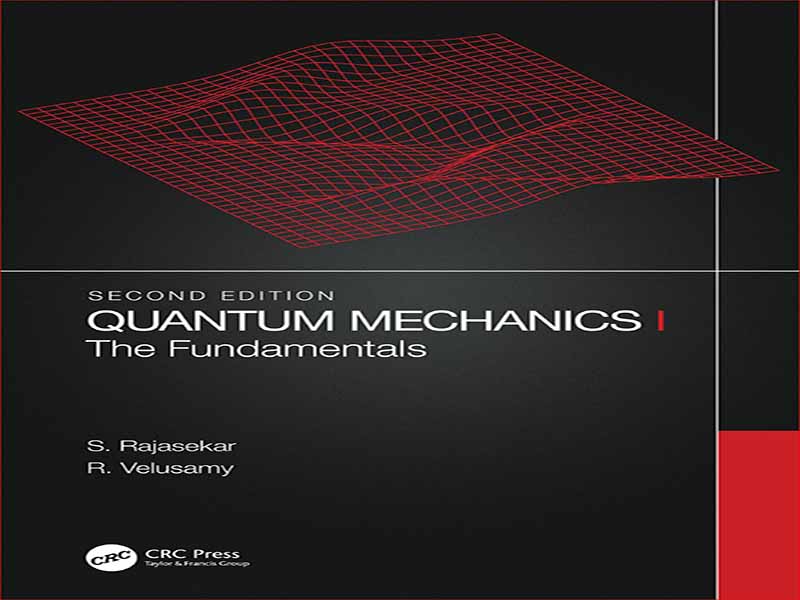- عنوان: Quantum Mechanics I: The Fundamentals
- نویسنده: S. Rajasekar and R. Velusamy
- حوزه: مکانیک کوانتومی
- سال انتشار: 2022
- تعداد صفحه: 606
- زبان اصلی انگلیسی
- نوع فایل: pdf
- حجم فایل: 22.1 مگابایت
مکانیک کوانتومی مطالعه رفتار ماده و انرژی در سطوح مولکولی، اتمی، هسته ای و حتی در سطح زیر هسته ای است. این کتاب در نظر گرفته شده است تا مقدمه ای گسترده بر مباحث اساسی و پیشرفته مکانیک کوانتومی ارائه دهد. جلد اول به مفاهیم پایه، فرمالیسم ریاضی و کاربرد در سیستم های فیزیکی مهم اختصاص دارد. جلد دوم بیشتر موضوعات پیشرفته مورد علاقه تحقیقاتی فعلی در مکانیک کوانتومی را پوشش می دهد. هر دو جلد در درجه اول به عنوان متون در سطح کارشناسی ارشد و همچنین به عنوان کتاب مرجع توسعه یافته است. علاوه بر مثال های کار شده، مجموعه تمرینات متعددی در پایان هر فصل گنجانده شده است. راه حل ها در صورت درخواست ناشر برای مربیان تایید شده در دسترس است. برخی از تمرینها بهعنوان شیوهای برای درک و برجسته کردن اهمیت مفاهیم اساسی عمل میکنند، در حالی که برخی دیگر کاربرد تئوری را برای سیستمها/مشکلات مهم فیزیکی مختلف تشکیل میدهند. پیشرفتهای انجام شده در سالهای اخیر در مورد روشهای مختلف ریاضی، روشهای نظری، کاربردها و مشاهدات تجربی آنها در هر جا که لازم باشد و امکان داشته باشد اشاره میشود و علاوه بر آن با ارجاعاتی نقل میشود تا خوانندگان بتوانند برای جزئیات بیشتر به آنها مراجعه کنند. جلد اول شامل 23 فصل و 7 پیوست است. فصل 1 خلاصه ای از نیازهای نظریه کوانتومی و توسعه اولیه آن (نظریه کوانتومی قدیمی) است. فصل های 2 و 3 چارچوب ریاضی پایه مکانیک کوانتومی را ارائه می کنند. مکانیک موج شرودینگر و فرمالیسم عملگر در این فصل ها معرفی می شوند. فصل های 4 و 5 به ترتیب به حل های تحلیلی حالت های محدود و حالت های پراکنده برخی از سیستم های میکروسکوپی مهم فیزیکی می پردازند. مبانی مکانیک ماتریس، نماد برداری دیراک از بردارهای حالت و فضای هیلبرت در فصل 6 توضیح داده شده است. فصل بعدی تصاویر شرودینگر، هایزنبرگ و برهمکنش از تکامل زمانی سیستم های مکانیکی کوانتومی را ارائه می دهد. شرح تکامل زمانی مجموعه ها با استفاده از ماتریس چگالی نیز شرح داده شده است. فصل هشتم به اصل عدم قطعیت هایزنبرگ می پردازد. شرح مختصری از تابع موج در فضای تکانه و دینامیک بسته موج به ترتیب در فصل های 9 و 10 ارائه شده است. نظریه تکانه زاویه ای در فصل 11 پوشش داده شده است. فصل 12 منحصراً به نظریه اتم هیدروژن اختصاص دارد. فصلهای 13 تا 16 عمدتاً به روشهای تقریبی مانند نظریههای اغتشاش مستقل از زمان و وابسته به زمان، روش WKB و روش تغییرات مربوط میشوند. تئوری اولیه پراکندگی الاستیک در فصل 17 ارائه شده است. ذرات یکسان در فصل 18 مورد بررسی قرار می گیرند. فصل بعدی نظریه کوانتومی ذرات نسبیتی را با تأکید ویژه بر معادله کلاین-گوردون، معادله دیراک و حل آن برای یک ذره آزاد، یک ذره ارائه می کند. در یک جعبه (پارادوکس کلاین) و اتم هیدروژن. مکانیک کوانتومی مفاهیم جدیدی مانند دوگانگی موج-ذره، اصل عدم قطعیت و فروپاشی تابع موج به دلیل اندازه گیری انجام شده دارد. فصل 20 پیامدهای عجیب نقش اندازهگیری را از طریق پارادوکسهای EPR و یک آزمایش فکری شرودینگر بررسی میکند. طرح مختصری از نابرابری بل و مثالهای مکانیکی کوانتومی که آن را نقض میکنند، ارائه شده است. با اشاره به آزمایشهای شکاف دوگانه اصلاحشده با دوگانگی ذرهای، که به عنوان آزمایشهای انتخاب تاخیری نامیده میشوند، پیشنهاد و انجام شدهاند تا مشخص شود که آیا یک ذره میکروسکوپی تصمیم میگیرد بدون توجه به مسیر بعدی، بهعنوان یک ذره رفتار کند یا در خود شکافها موج بزند. این آزمایشها و نتایج آنها در فصل 21 ارائه شدهاند. فصل بعدی ویژگیهای مختلف مکانیک کوانتومی کسری را معرفی و پوشش میدهد که در معادله شرودینگر مشتق فضا یا مشتق زمان یا هر دو میتوانند کسری باشند.
Quantum mechanics is the study of the behaviour of matter and energy at the molecular, atomic, nuclear levels and even at sub-nuclear level. This book is intended to provide a broad introduction to fundamental and advanced topics of quantum mechanics. Volume I is devoted to basic concepts, mathematical formalism and application to physically impor- tant systems. Volume II covers most of the advanced topics of current research interest in quantum mechanics. Both the volumes are primarily developed as texts at the graduate level and also as reference books. In addition to worked-out examples, numerous collection of exercises are included at the end of each chapter. Solutions are available to confirmed instructors upon request to the publisher. Some of the exercises serve as a mode of under- standing and highlighting the significances of basic concepts while others form application of theory to various physically important systems/problems. Developments made in recent years on various mathematical treatments, theoretical methods, their applications and ex- perimental observations are pointed out wherever necessary and possible and moreover they are quoted with references so that readers can refer them for more details. Volume I consists of 23 chapters and 7 appendices. Chapter 1 summarizes the needs for the quantum theory and its early development (old quantum theory). Chapters 2 and 3 pro- vide the basic mathematical framework of quantum mechanics. Schr¨odinger wave mechanics and operator formalism are introduced in these chapters. Chapters 4 and 5 are concerned with the analytical solutions of bound states and scattering states, respectively, of certain physically important microscopic systems. The basics of matrix mechanics, Dirac’s notation of state vectors and Hilbert space are elucidated in chapter 6. The next chapter gives the Schr¨odinger, Heisenberg and interaction pictures of time evolution of quantum mechanical systems. Description of time evolution of ensembles by means of density matrix is also de- scribed. Chapter 8 is concerned with Heisenberg’s uncertainty principle. A brief account of wave function in momentum space and wave packet dynamics are presented in chapters 9 and 10, respectively. Theory of angular momentum is covered in chapter 11. Chapter 12 is devoted exclusively to the theory of hydrogen atom. Chapters 13 through 16 are mainly concerned with approximation methods such as time-independent and time-dependent perturbation theories, WKB method and variational method. The elementary theory of elastic scattering is presented in chapter 17. Identical particles are treated in chapter 18. The next chapter presents quantum theory of relativistic particles with specific emphasize on Klein–Gordon equation, Dirac equation and its solution for a free particle, a particle in a box (Klein paradox) and hydrogen atom. Quantum mechanics has novel concepts like wave-particle duality, the uncertainty princi- ple and wave function collapse due to measurement done. Chapter 20 examines the strange consequences of role of measurement through the paradoxes of EPR and a thought ex- periment of Schr¨odinger. A brief sketch of Bell’s inequality and the quantum mechanical examples violating it are given. With reference to wave-particle duality modified double slit experiments, referred as delayed-choice experiments, have been proposed and performed to identify whether a microscopic particle decides to behave as a particle or wave at the slits itself irrespective of the later path. These experiments and their outcomes are presented in chapter 21. The next chapter introduces and covers the various features of fractional quantum mechanics where in the Schr¨odinger equation the space derivative or the time derivative or both can be fractional.
این کتاب را میتوانید بصورت رایگان از لینک زیر دانلود نمایید.
Download: Quantum Mechanics I: The Fundamentals





































نظرات کاربران